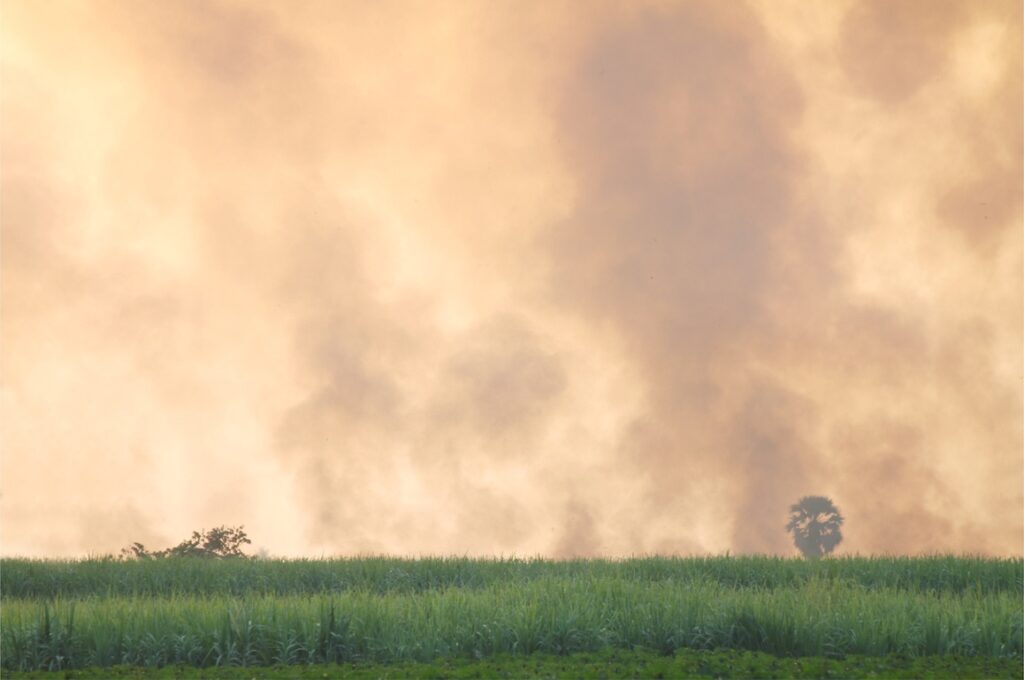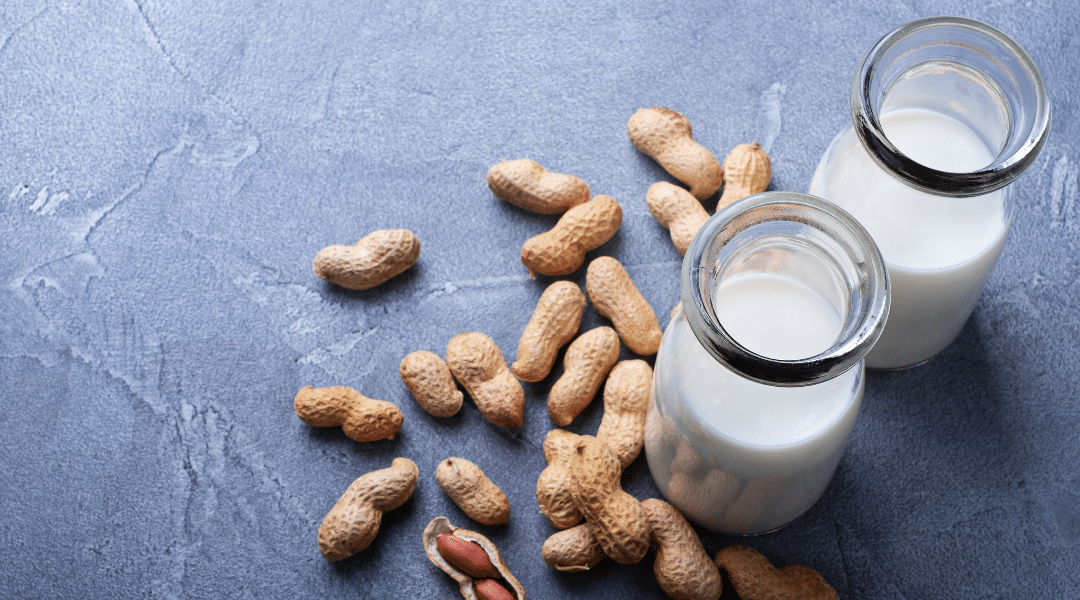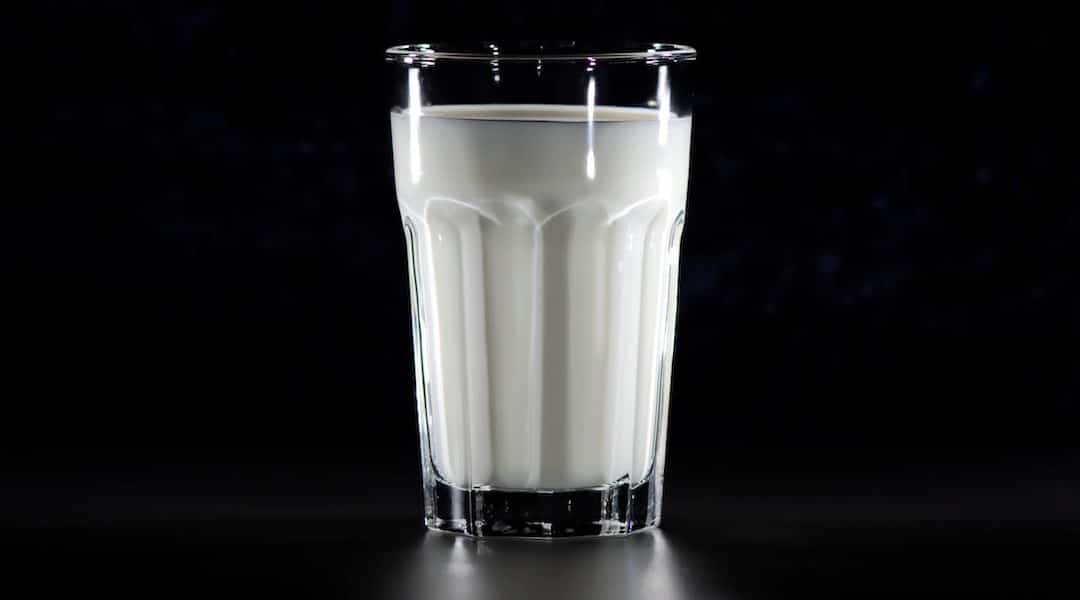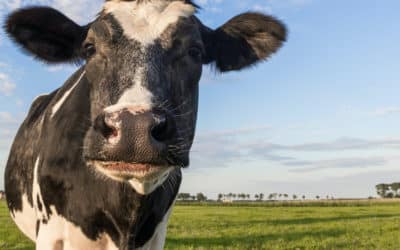Estimated read time: 3 minutes
By Justin Long
Anyone who has driven Interstate 5 through California’s San Joaquin Valley more than once knows to keep the car windows rolled up and the AC on recycled air as you pass Harris Ranch. That’s because the palpable stench of manure from 100,000 head of cattle hangs so thick in the air that you can almost taste it. Therefore, it’s no coincidence that the San Joaquin Valley is also home to the highest rate of childhood asthma in the United States (1).
While much attention has rightly been paid to the long-term consequences of fossil fuel use on air quality and its role in accelerating climate change, the processes involved in meat and dairy production play a significant role in environmental degradation and contribute to harmful air pollution.
The processes involved in meat and dairy production play a significant role in environmental degradation and contribute to harmful air pollution.
Greenhouse Gas Emissions
GWPs (Global Warming Potentials) of greenhouse gases are measured by comparing their heat-trapping abilities to that of carbon dioxide over a designated time frame, typically 100 years. This comparison helps us understand how much impact each gas has on global warming.
Meat and dairy production are notorious for their contribution to greenhouse gas emissions, primarily methane and nitrous oxide. Methane, produced by livestock during digestion and from manure management systems, is a potent greenhouse gas with around 28 times the warming potential of carbon dioxide over a 100-year period (2).
Similarly, nitrous oxide, also known as laughing gas, is largely emitted from manure and fertilizer use in feed production. While less prevalent than carbon dioxide, nitrous oxide possesses a remarkable capacity to trap heat in the atmosphere due to its molecular structure, which has a greater ability to absorb and emit infrared radiation compared to carbon dioxide. It’s approximately 300 times more potent than CO2 over a 100-year period. This potency makes it a formidable contributor to global warming and climate change.

The release of methane and nitrous oxide into the atmosphere exacerbates the greenhouse effect, leading to increased temperatures, disruption of ecosystems, and more extreme weather patterns, which in turn affect air quality and human health, locally and globally.
Ammonia Emissions
Livestock farming is a significant source of ammonia emissions, a precursor to fine particulate matter (PM2.5) and ground-level ozone formation. Ammonia is released from animal waste and nitrogen-based fertilizers used to grow feed crops for livestock. Once in the atmosphere, ammonia reacts with other pollutants to form particulate matter.

Particulate Matter
Particulate matter (PM) pollution, consisting of tiny particles suspended in the air, is a major concern associated with meat and dairy production. Activities such as the operation of feedlots, the application of manure to fields, and the transportation of livestock contribute to the release of particulate matter into the atmosphere. These particles can vary in size, with PM2.5 and PM10 being the most concerning due to their ability to penetrate deep into the respiratory system or get absorbed into the bloodstream. Exposure to particulate matter is linked to a range of health problems, including respiratory diseases like asthma, bronchitis, heart disease and even cancer.

Conclusion
The production and consumption of meat and dairy products have significant implications for air quality and public health. From greenhouse gas emissions to the release of ammonia and particulate matter, the environmental footprint of these industries extends far beyond the plate.
The Solution
Plant-based proteins require fewer resources and emit fewer greenhouse gases compared to animal-based proteins.
Reducing Meat and Dairy Consumption: Shifting towards plant-based diets or reducing meat and dairy consumption can significantly lower the environmental footprint associated with these industries. Plant-based proteins require fewer resources and emit fewer greenhouse gases compared to animal-based proteins.
We, as consumers, have the power to drive positive and lasting change. By choosing to eat plant foods, we can reduce our environmental impact and ensure that we leave behind a healthier planet for future generations.







